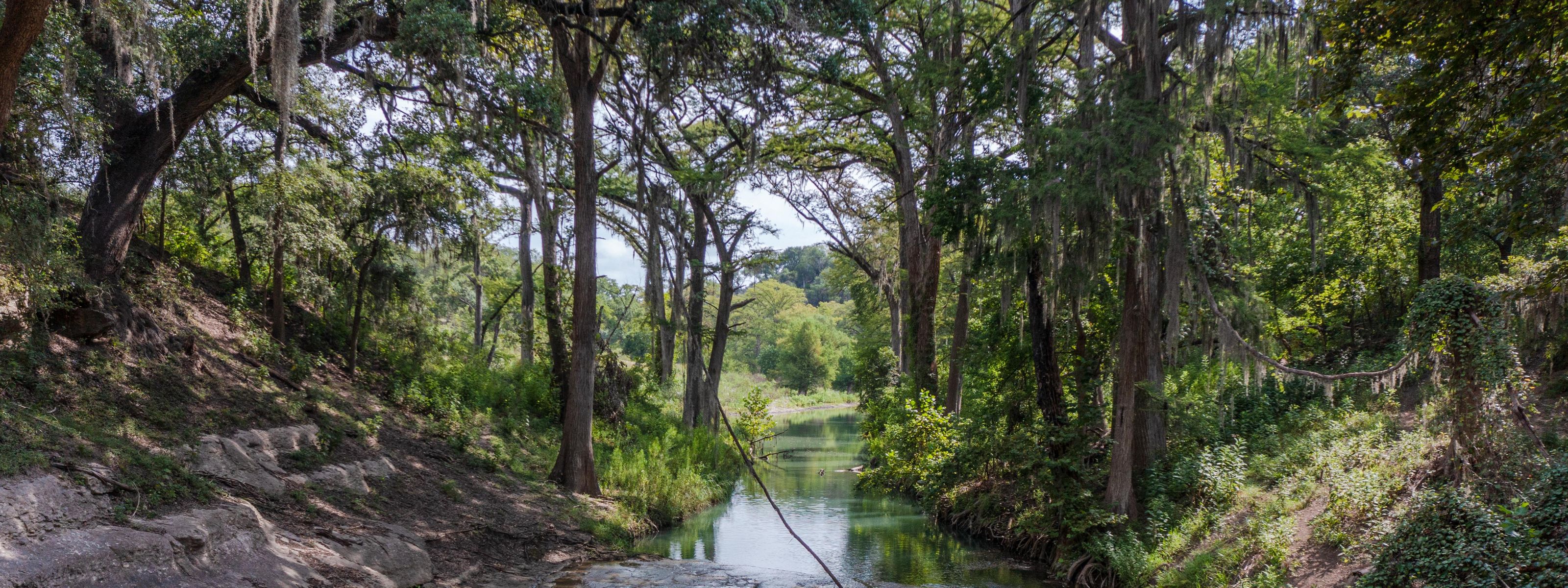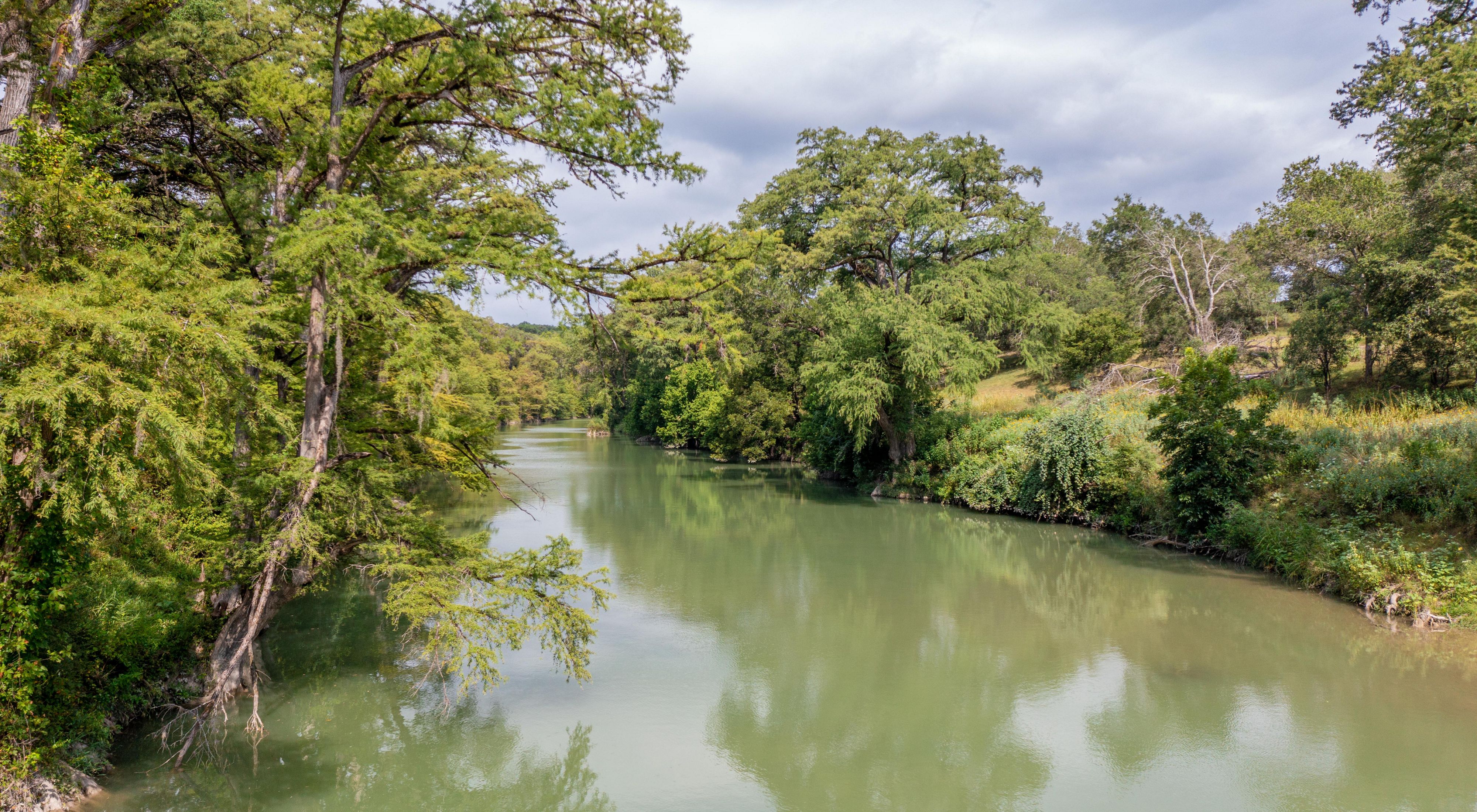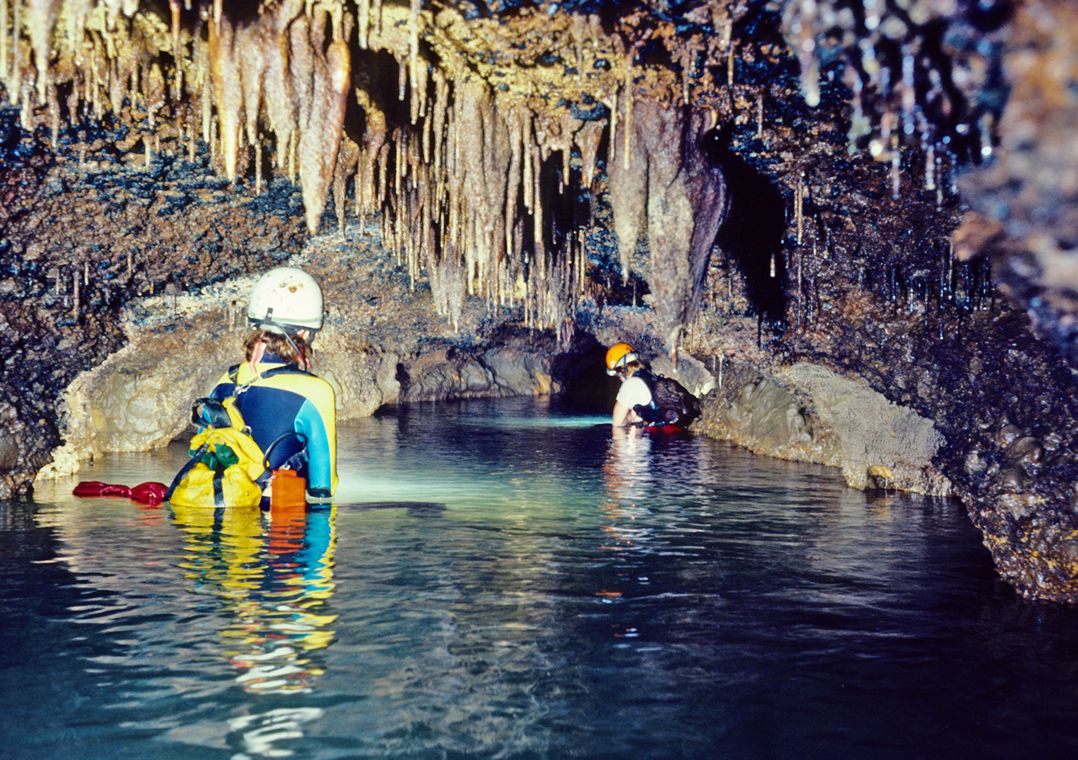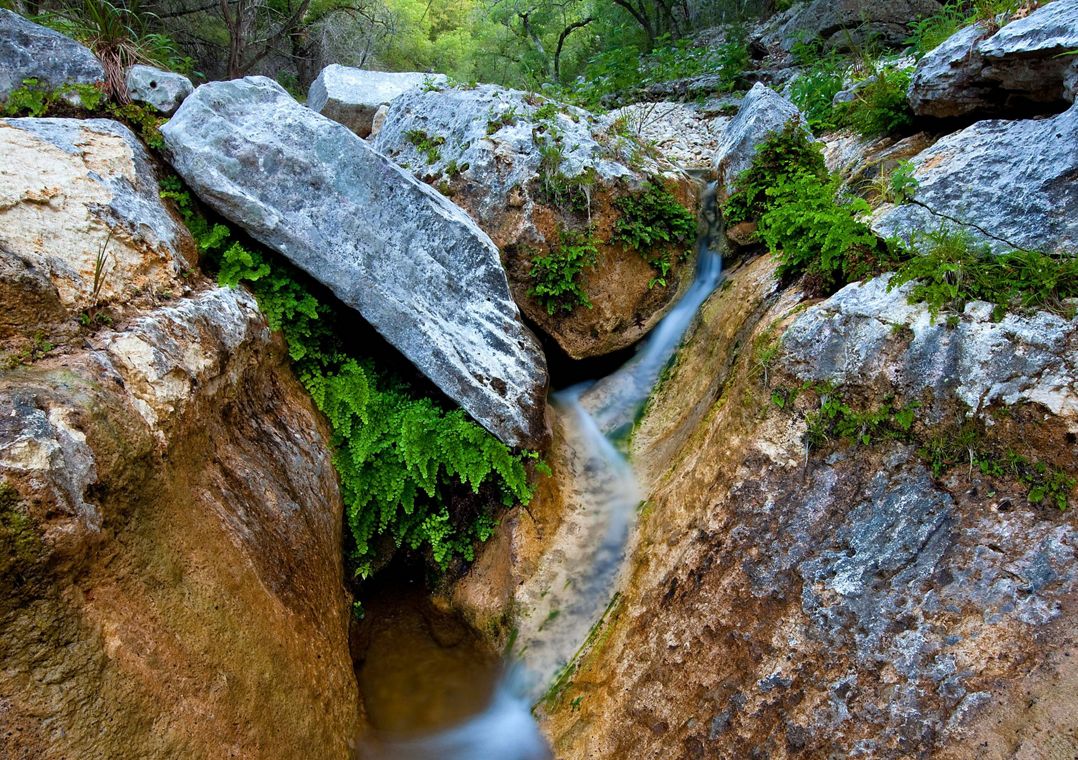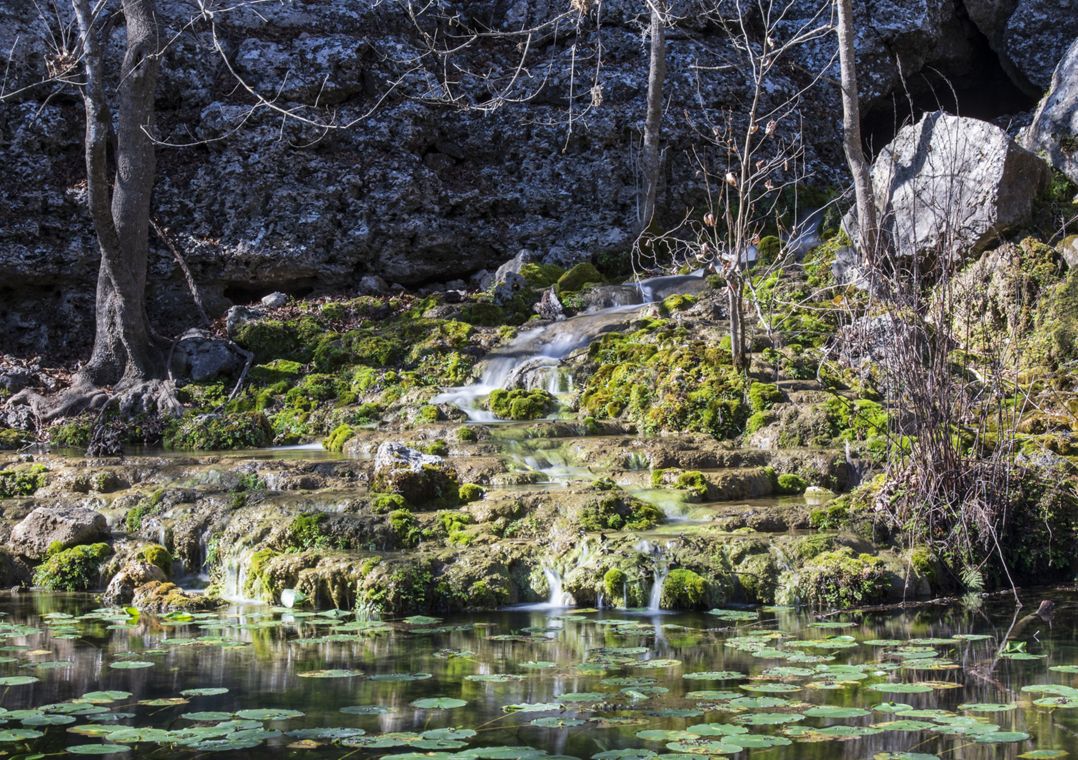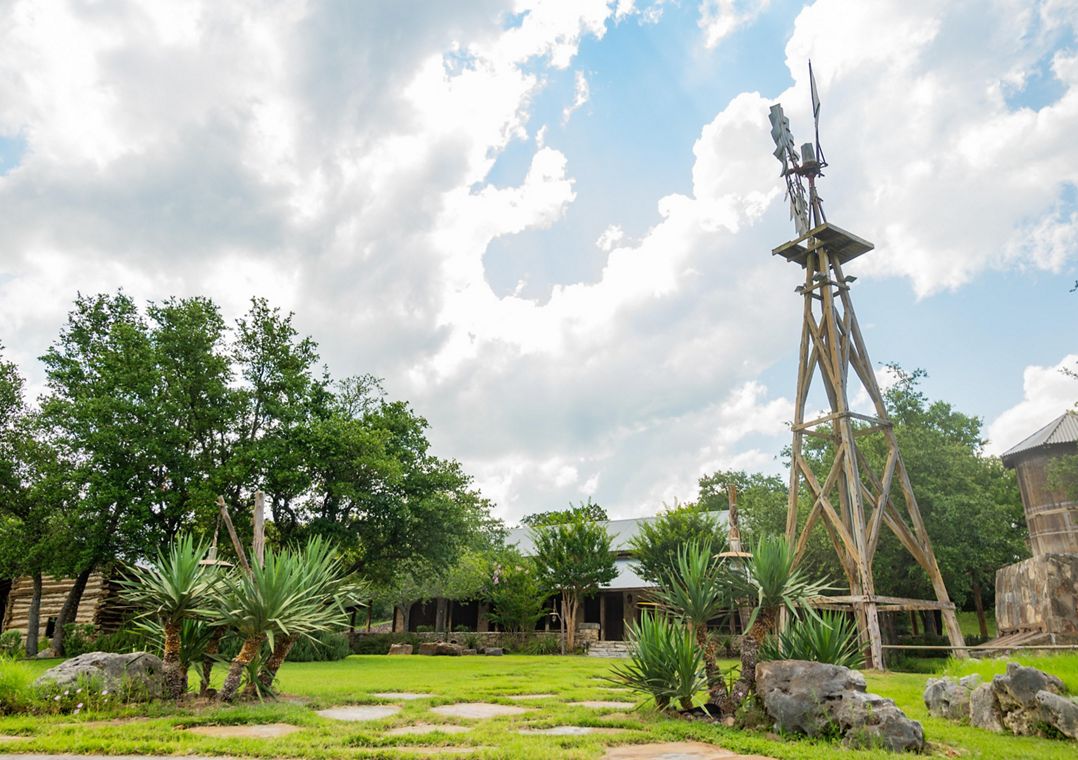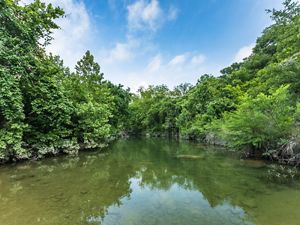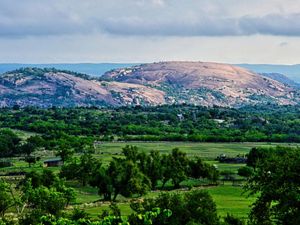Honey Creek Ranch: Sweet Conservation Spot of the Texas Hill Country
This 515-acre acquisition in Central Texas will protect the headwaters of Honey Creek, preserve water quality and expand recreational opportunities.
Just 30 miles outside of San Antonio, a pristine stream still runs wild. The clear waters of Honey Creek flow for 2.5 miles from its source, rolling over limestone boulders as it winds through the Hill Country before finally meeting the Guadalupe River. Fed by natural springs, the cypress-lined creek supports diverse plant and wildlife species at the Honey Creek State Natural Area. This 2,300-acre protected area brings new meaning to a “land of milk and honey,” with an abundance of natural beauty and ecological value.
What Lies Above and Beneath
Honey Creek State Natural Area and the adjacent Guadalupe River State Park are located in one of the fastest-growing regions not only in the state, but also in the nation. It’s estimated that nearly 500 people move to Texas each day. As Central Texas continues to grow, it’s especially important that we carve out spaces that protect natural areas. The conservation value of the Hill Country remains irreplaceable with its rolling hills and rugged terrain, dotted by limestone cliffs, canyons and rivers.
Several important bird species, like the endangered golden-cheeked warbler and rare black-capped vireo, depend on the oak and juniper woodlands native to this region. Wild turkeys, bobcats and white-tailed deer can also be found roaming the Hill Country habitat. Its defining karst features allow water to trickle down through porous limestone into the underlying Edwards Aquifer, a source of drinking water for millions of Central Texans. The aquifer also supports many spring-fed rivers, lakes and creeks, where rare aquatic species, like the Comal blind salamander and Guadalupe bass, are only found.
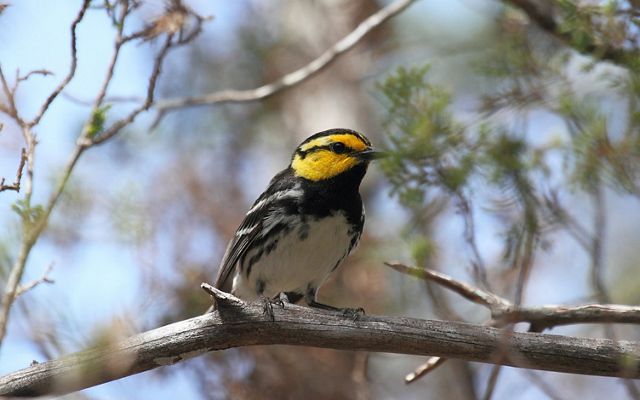
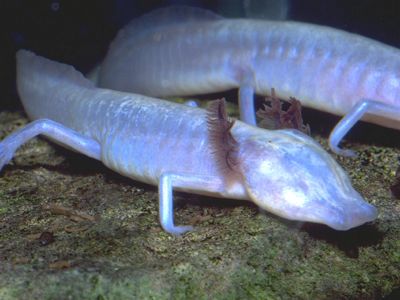
A Golden Opportunity for Conservation
When a 1,600-home housing development was proposed on an unspoiled 515-acre tract in Comal County, known as Honey Creek Ranch, The Nature Conservancy in Texas (TNC), Texas Parks and Wildlife Department (TPWD), Texas Parks and Wildlife Foundation (TPWF) and local community members knew they needed to act. Runoff and waste from this potential development posed risks to the water quality of Honey Creek, the Edwards Aquifer and Canyon Lake Reservoir—which roughly 36,000 Texans depend on for drinking water.
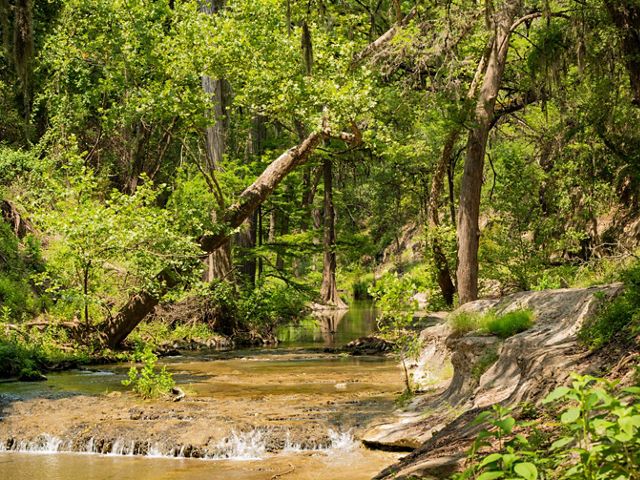
After months of discussions with property owners Ronnie and Terry Urbanczyk, nearby school officials and stakeholders, TNC and TPWD reached an agreement, protecting the acreage and the creek’s headwaters in perpetuity—a major win for the conservation community. The best part: the land will ultimately be incorporated into the Honey Creek State Natural Area, offering folks the chance to camp, hike, swim and more.
An Ending Sweet as Honey
The protection of Honey Creek Ranch represents a collective endeavor to safeguard an invaluable slice of the Texas Hill Country. This acquisition was funded in part by TPWD’s Land and Water Conservation Fund allocation—which was recently expanded by the passage of the Great American Outdoors Act in 2020. Thanks to this bipartisan legislation, the state's budget for land acquisitions from federal funding went from $3 million to more than $17 million overnight. The Fund, which requires a "one-to-one" match, allowed TNC and partners to leverage both private donations and state funding to take full advantage of these new federal funds and make a big impact.
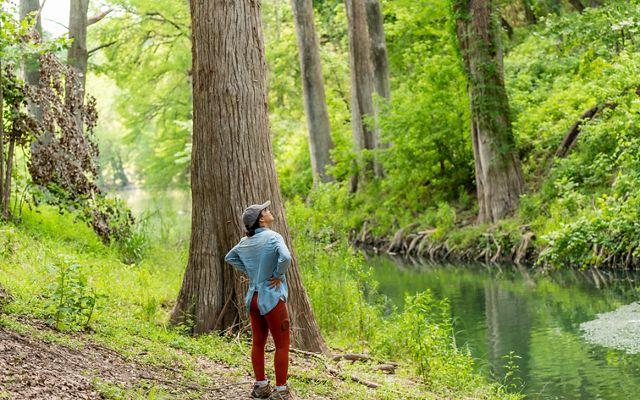
“This has been one of the most challenging—and rewarding—transactions of my 25-year career working on land conservation,” said Jeff Francell, TNC Texas Director of Land Protection. “If we had not been successful in buying the property, it would have been developed into more than 1,000 houses with a wastewater system right at the headwaters of pristine Honey Creek. These creek and spring systems are so fragile in the Hill Country that the water quality would have been significantly diminished, impacting not just the ecosystem but the thousands of people who get to enjoy it every year.”
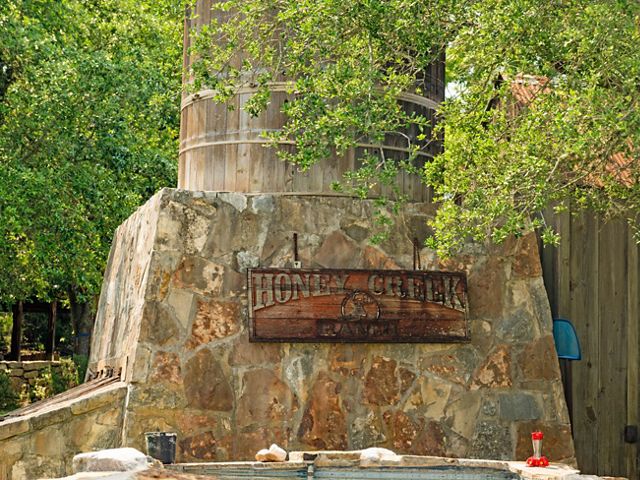
Although complex, this land deal has proven to be worth the wait. Thanks to the help of willing landowners, Comal ISD, TPWF, partners and funders like the Horizon Foundation, Karen Hixon, Knobloch Family Foundation, Mays Family Foundation, Jacob and Terese Hershey Foundation, Kronkosky Charitable Foundation, The Meadows Foundation and Amy Shelton McNutt Charitable Trust, we’ve created a more resilient and connected Central Texas landscape—helping nature thrive, keeping freshwater resources clean and enhancing opportunities for relaxation and recreation. Together, this work has ensured that the sweet waters of Honey Creek can continue to flow for future generations to enjoy.
TNC's Work in the Honey Creek Watershed
The Public Speaks
Voters approve San Antonio's first publicly financed measure to safeguard the Edwards Aquifer, creating the Edwards Aquifer Protection Program. Since 2000, TNC and partners have protected more than 95,000 acres over the aquifer.
Protecting Caves and Critters
TNC purchases a conservation easement on 621 acres at Honey Creek Spring Ranch. The land, located next to the Guadalupe River State Park, protects the longest cave in Texas, endemic species and the spring that feeds Honey Creek.
We Can’t Save Nature Without You
Sign up to receive monthly conservation news and updates from Texas. Get a preview of Texas' Nature News email.
